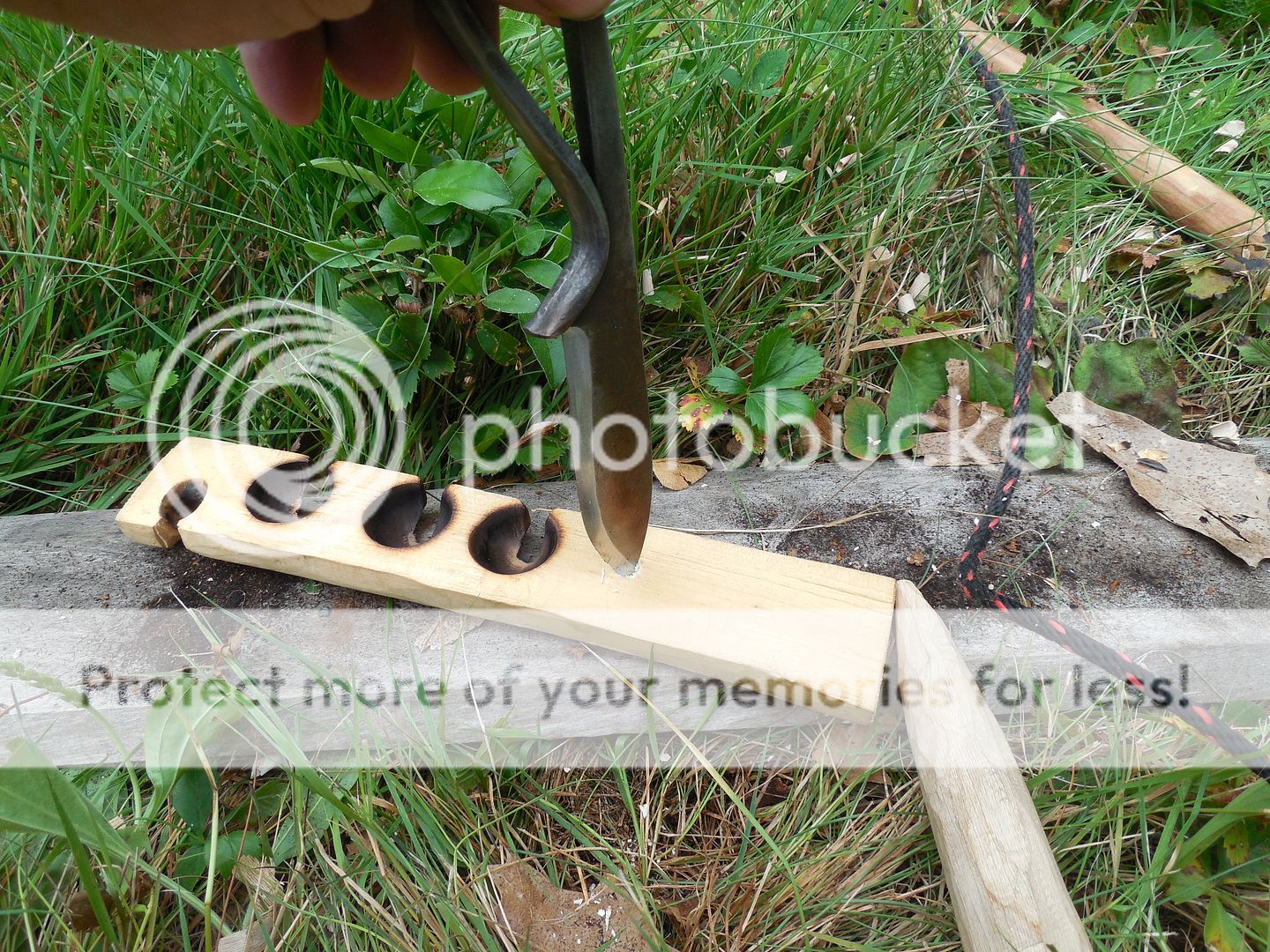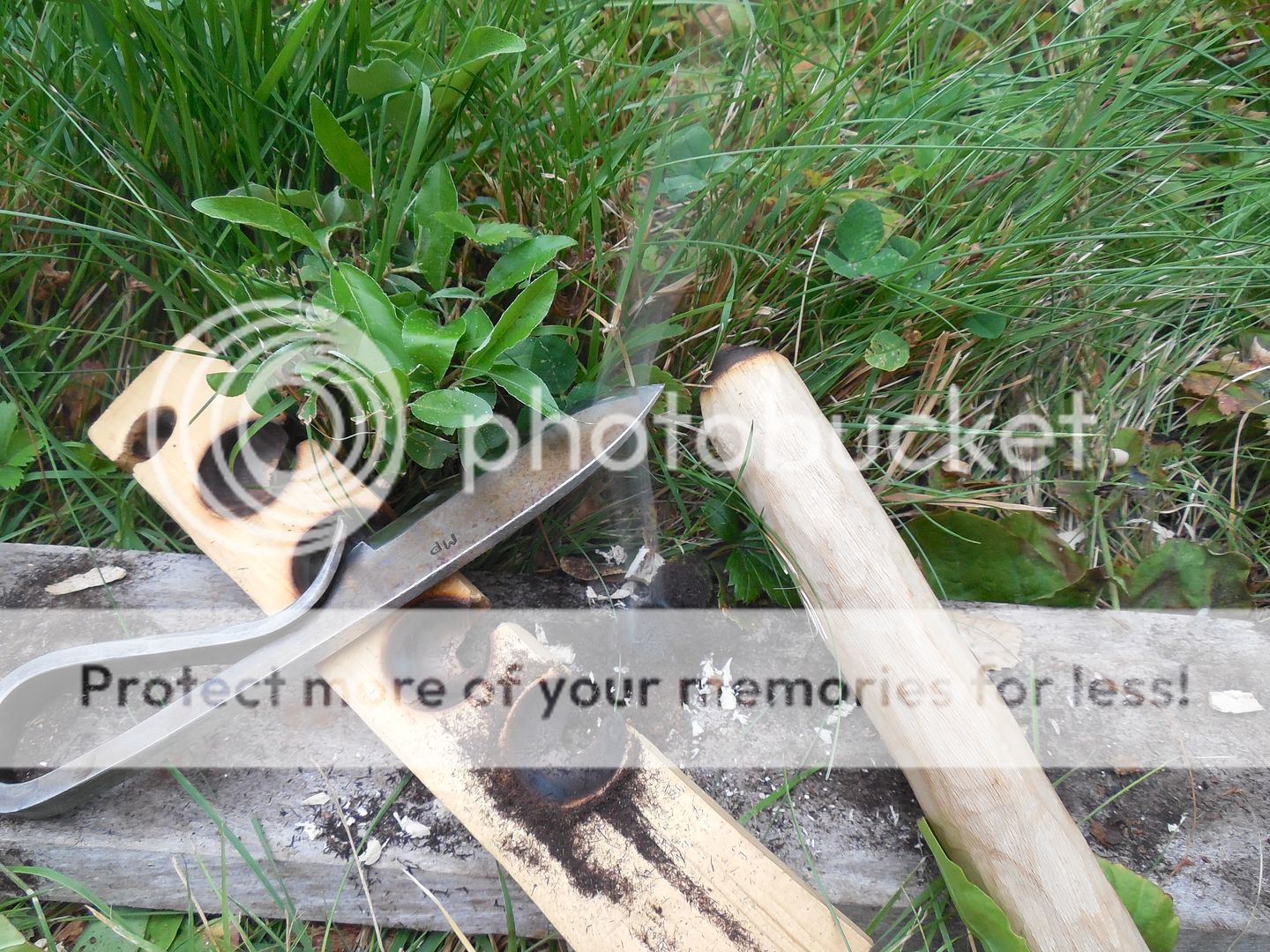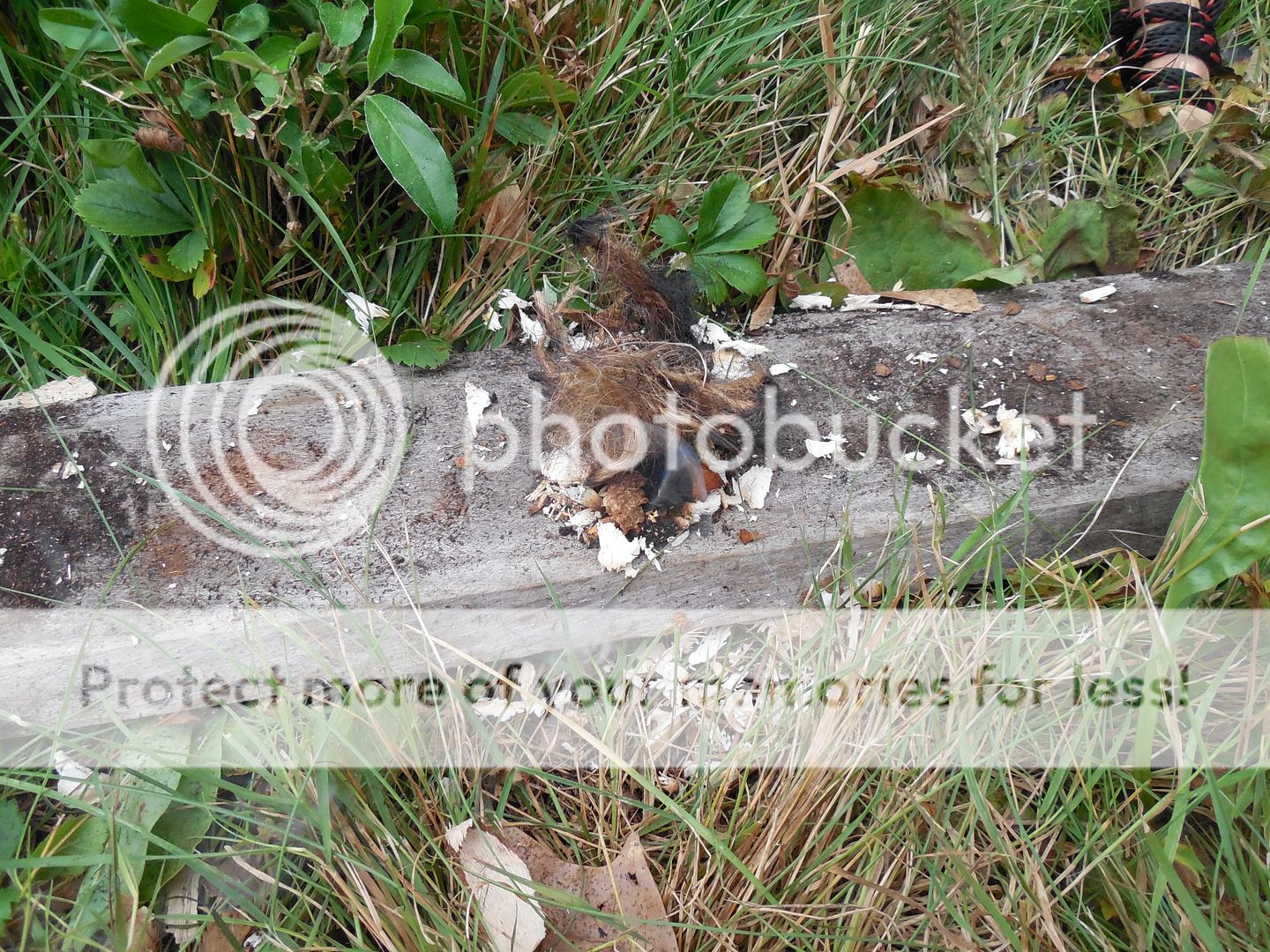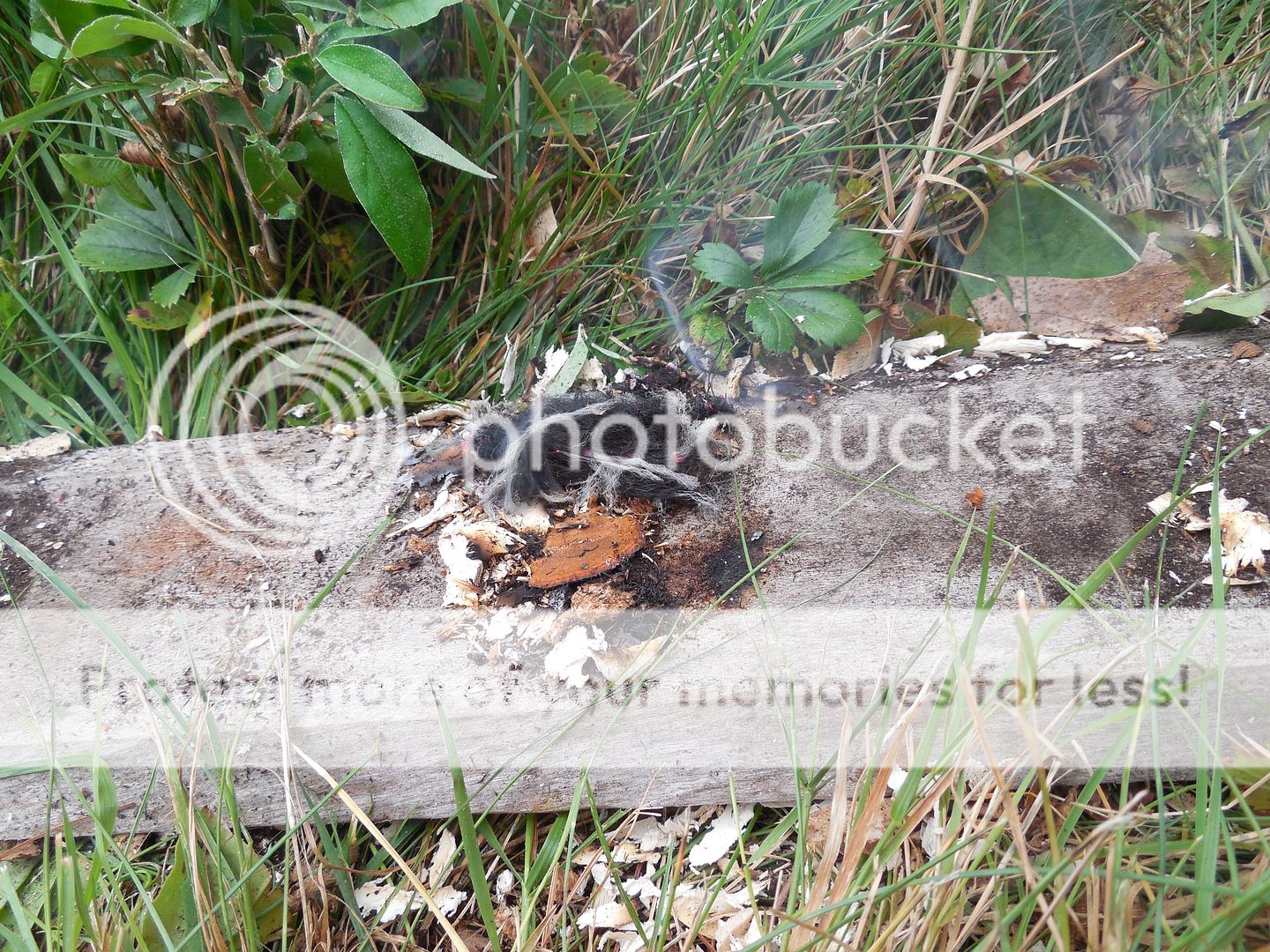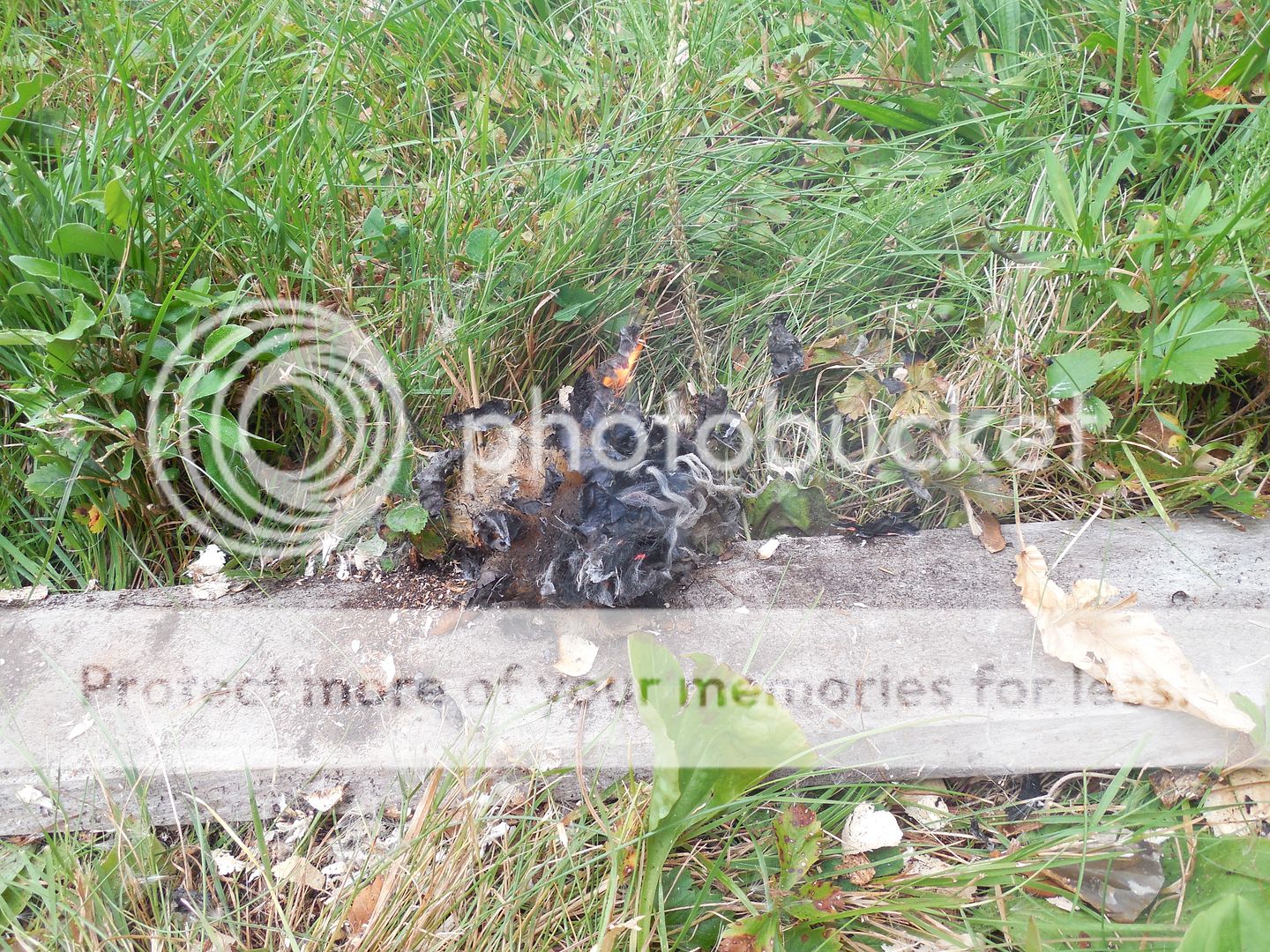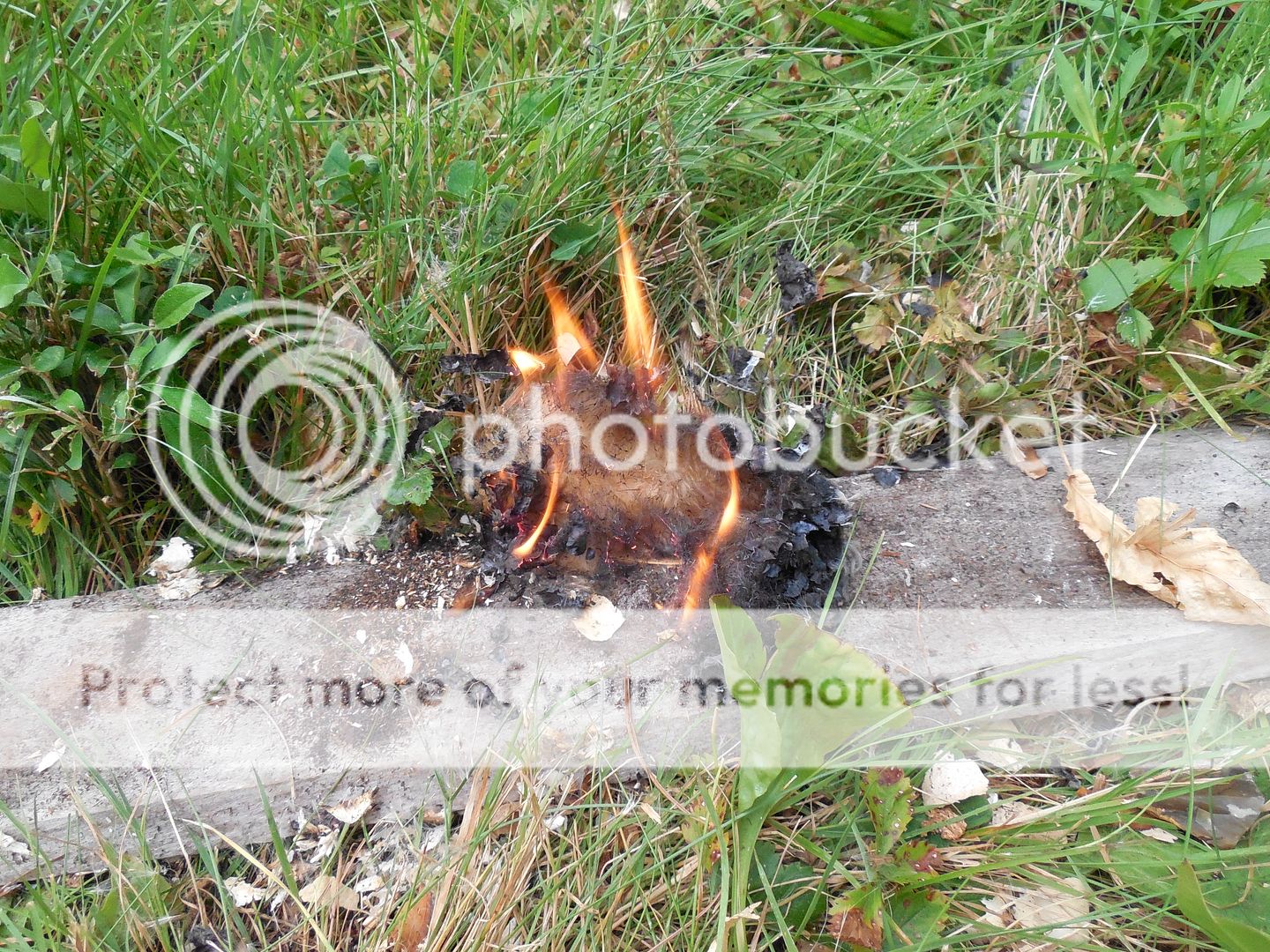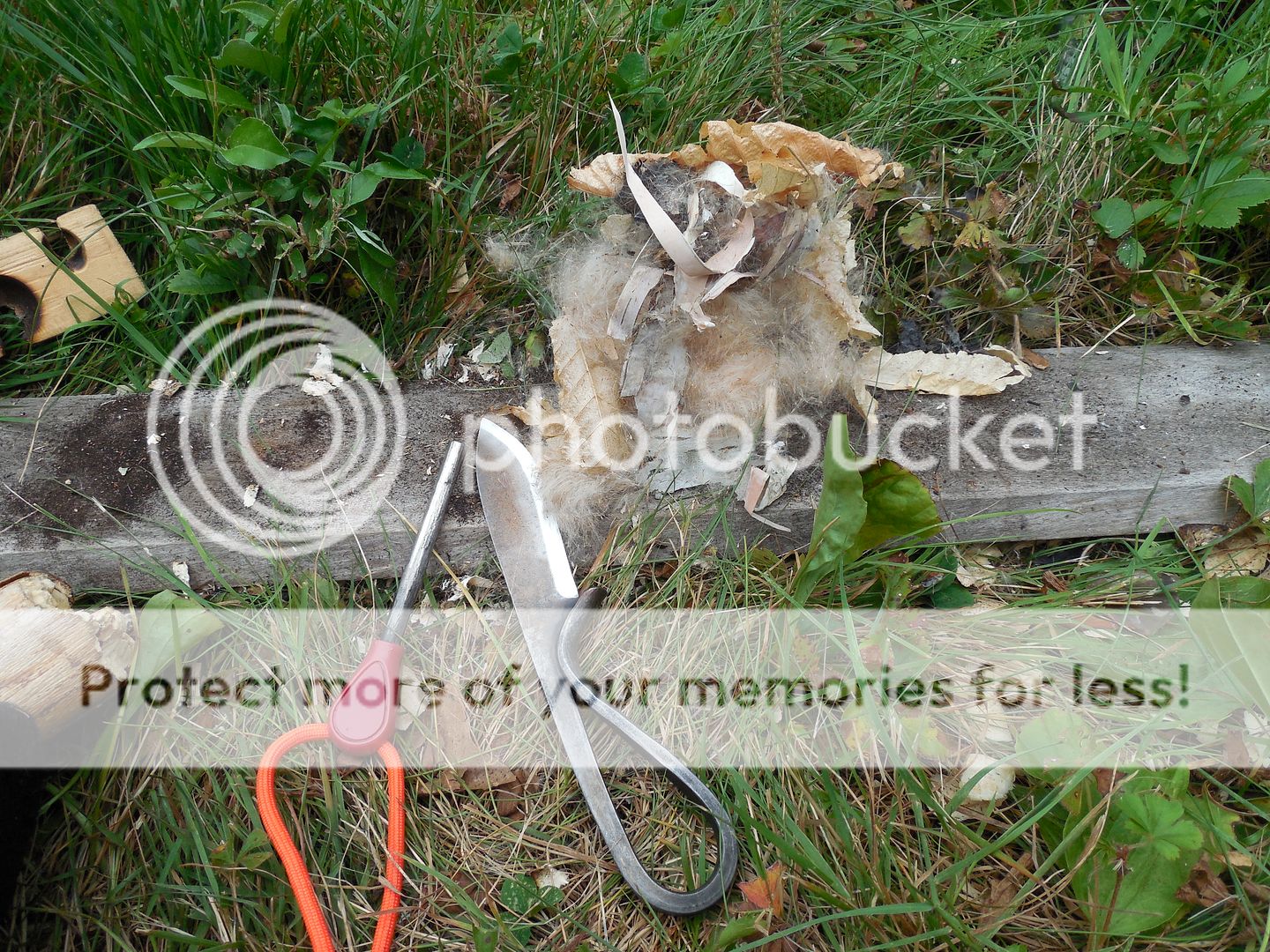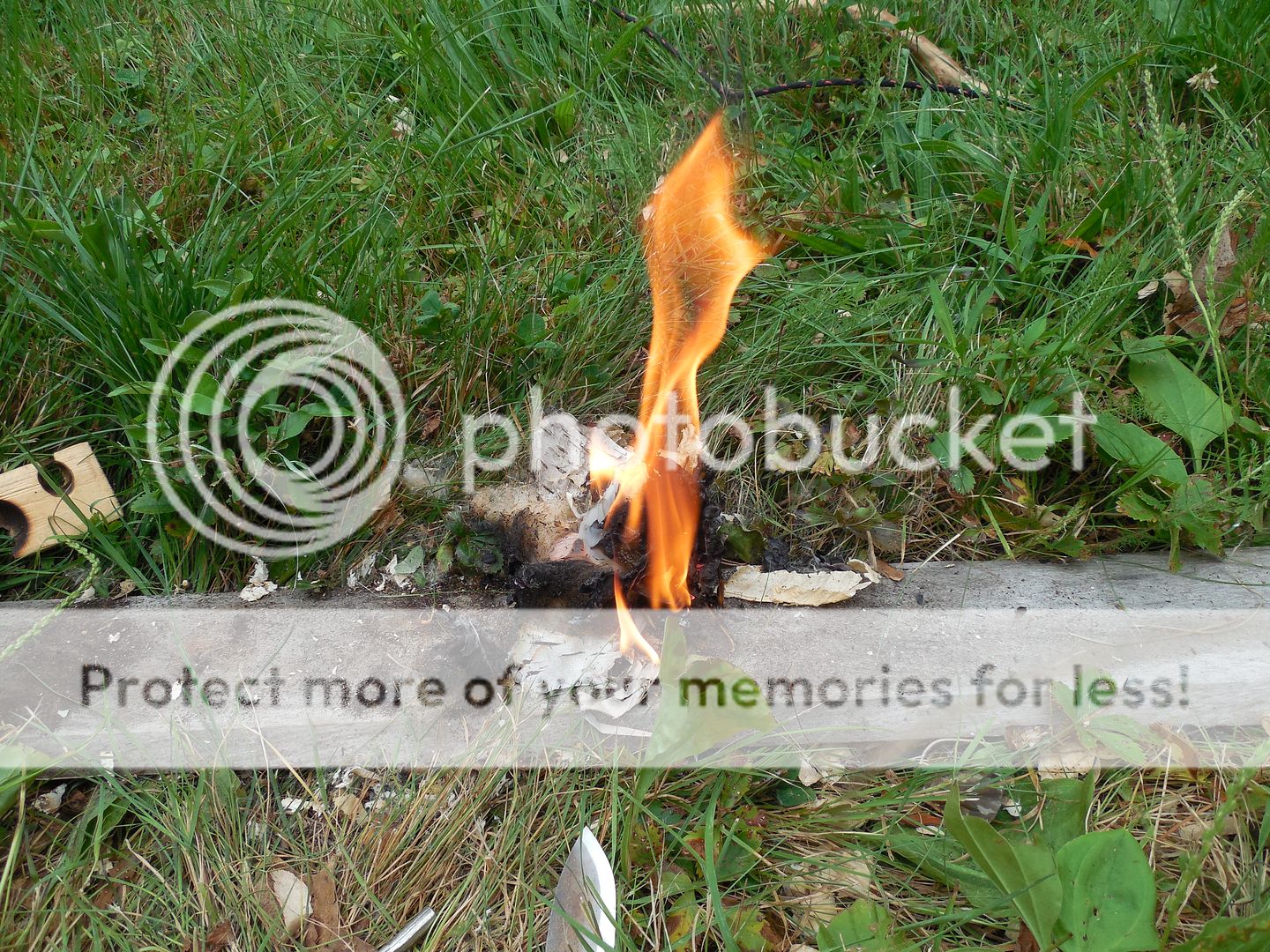- Joined
- Jun 3, 2010
- Messages
- 1,516
All of my kit is tested before being taken out into the field. Then tested again over multiple outings to see if it will be included within my gear or left to languish in storage boxes. A Striker knife is a type of knife which does double duty as both firecraft implement and knife. In many ways most knives within skilled hands are firecraft implements. They can split wood, make feather sticks, help fluff up tinder, make shavings etc etc etc. The striker knife can do the jobs of a knife but also help facilitate the actual ignition of a fire better than many other carbon steel knives. To accomplish this the blacksmith must make the striking area hard enough to toss sparks but the blade itself shouldn't be dead hard as it might snap or chip under heavy usage. There are some striker knives that are all dead hard but these tend to be on the smaller side. To me the process of forging and heat treatment is nothing short of magic. I have separated the testing into 4 parts each with it's own video. Not everyone is interested in all the methods of firecraft tested so feel free to skip right to your interest.
Before going into the firecraft testing just some general info on the knife. It's made from forged 80CRV2. Maybe the stock came from Aldo? I don't know that or anything about the steel beyond the fact it must be a higher carbon as the knife tosses sparks from the impact with the sharp edge of certain rocks. To be honest I have yet to measure or weigh anything so if that info is requested I will do so. But unlike an ESEE Izula hardly any two custom hand made knives will be exactly 100% the same. They don't call them custom knives for nothing. Also I don't publicly state prices on a custom knife as no two are alike. All I will say is the price was reasonable.
The knife came shaving sharp. This is an issue of contention for me. Some say it doesn't matter as the user can sharpen their own knife plus sooner or later it will need to be done. (Rant on) I say it's wrong to spend extra money only to receive a dull knife. As if the maker doesn't honestly know what is being sold isn't sharp. Really? Gosh darn I know if my knives aren't sharp so I am expected to believe the professional maker doesn't? Also when it comes sharp I can strop the knife keeping it sharp for a long time. Sure sooner or later I will put the blade to sand paper or stone but IMHO wrong is wrong. If someone wants to create excuses for their favorite maker that's cool but I won't buy into that. I do understand that mistakes happen but the disappointment of getting a dull knife is real and everyone knows it. (Rant off) Good job MP knives. The knife's convex edge came shaving sharp as it should be. 10 out of 10! Their website.
http://new.mpknives.com/
Part 1:
Fire from charred natural materials, striker knife, chert and tinder bundle. The tinder bundle consisted of fluffed jute cordage and fungus coal extenders. Charred punkwood is renewable within the field and IMHO produces a better coal than most charcloth. On the down side this is often too delicate of a tinder to be supported on a rock. The rock must strike the steel driving the sparks down into the tinder. This can be more difficult as the distance is greater. Also some find the motion awkward. Somehow I think tossing a spark into a larger mass of charred material is more representative of how it was done back in the day. I could be wrong but it seems improbable that people cut up their clothing in the field to make fire. It wouldn't be too long before they were naked. LOL!
The materials ready to go. The knife's roll in this was to shave off some fungus for the coal extenders and act as a striker for the chert. Metal is removed from the knife's spine unlike using a firesteel. I really didn't need the coal extenders but they sure increase the odds of success.
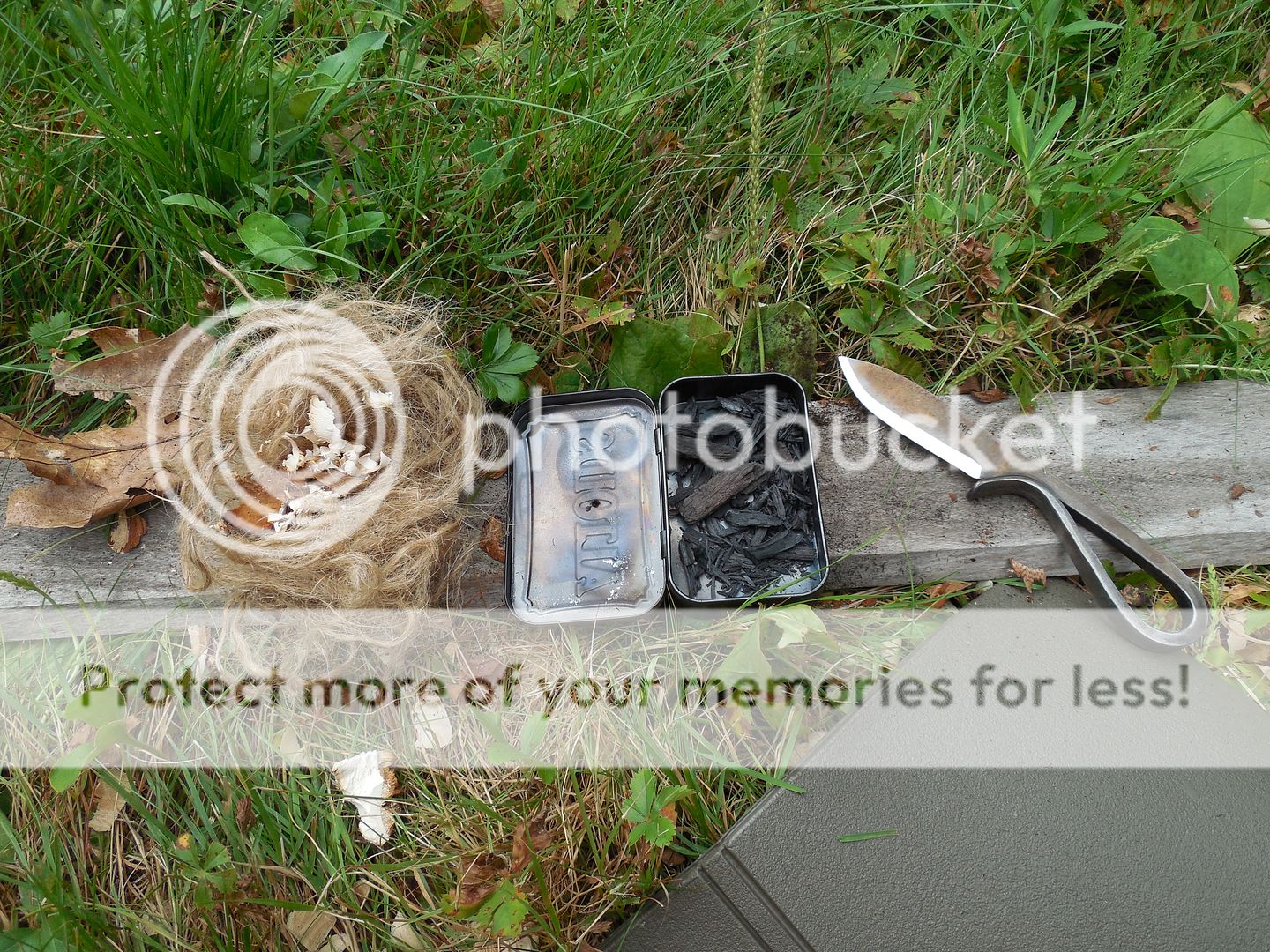
It took around 16 strikes to get a coal. Why so many? The greater distance means many sparks missed the tin. The knife is new to me. The chert was a bit rounded from earlier use. I didn't want to test it with a newly knapped edge as this doesn't always mirror what can be expected in the field. The coal was smoldering.....
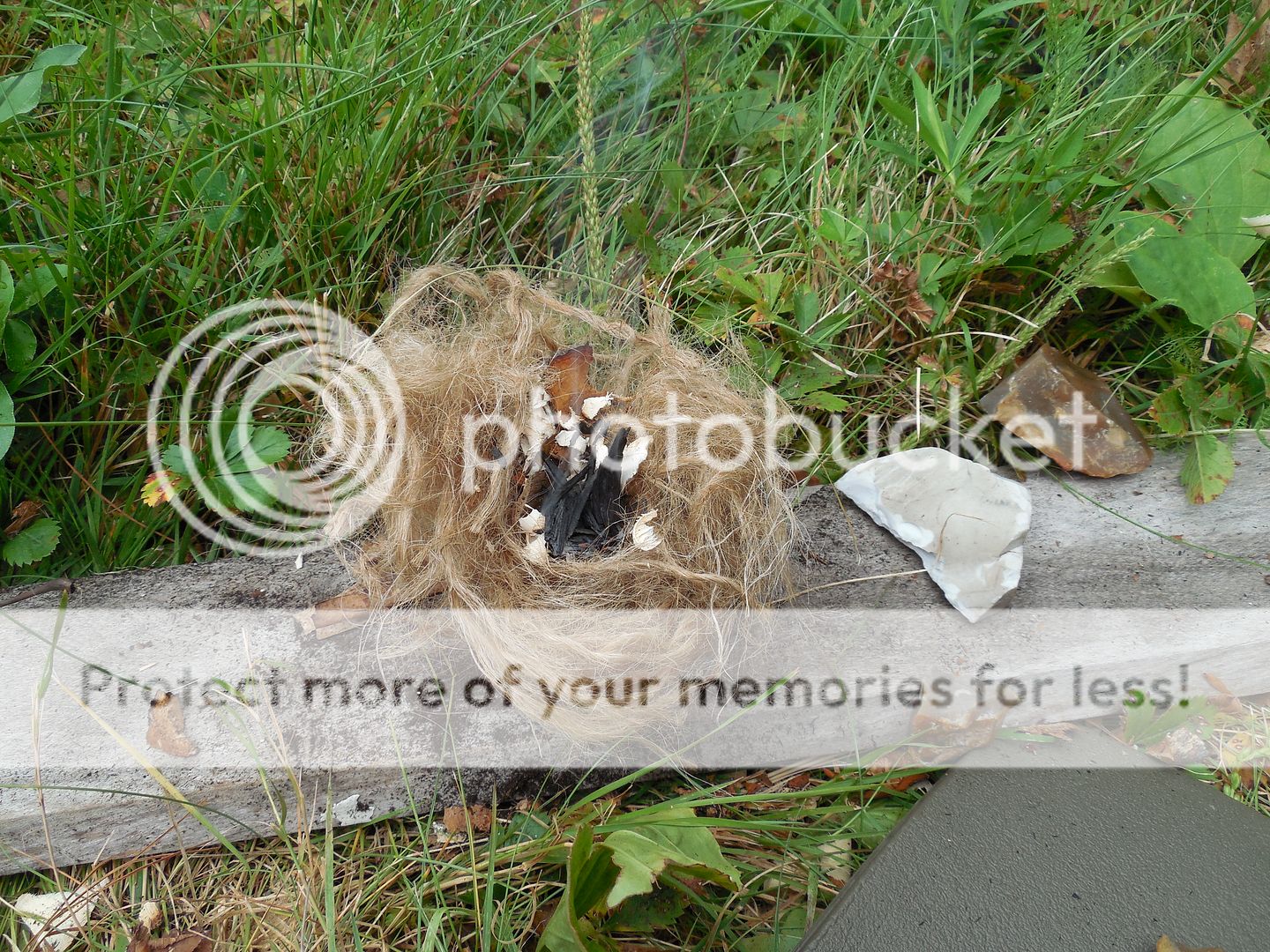
Fire.

Here is a video of the test.
[video=youtube;zT64zEySt3Q]https://www.youtube.com/watch?v=zT64zEySt3Q[/video]
Conclusions.
The same attributes that will make this knife shine in later testing was a bit of a negative here. It was slightly more difficult to hold the knife for this type of firecraft than a striker knife with a grasping curl nearer to the blade. Also the spark was average but not exceptional. Now we have to keep in mind the edge of the chert wasn't perfect and it was my first time using this method with this knife. I have done it with other knives but first of anything is hardly ever perfect. All of that said it did the job and I am confident that any charred or proven uncharred tinder would indeed take a coal using this method and knife.
Initial score 7 out of 10 for this test.
Before going into the firecraft testing just some general info on the knife. It's made from forged 80CRV2. Maybe the stock came from Aldo? I don't know that or anything about the steel beyond the fact it must be a higher carbon as the knife tosses sparks from the impact with the sharp edge of certain rocks. To be honest I have yet to measure or weigh anything so if that info is requested I will do so. But unlike an ESEE Izula hardly any two custom hand made knives will be exactly 100% the same. They don't call them custom knives for nothing. Also I don't publicly state prices on a custom knife as no two are alike. All I will say is the price was reasonable.
The knife came shaving sharp. This is an issue of contention for me. Some say it doesn't matter as the user can sharpen their own knife plus sooner or later it will need to be done. (Rant on) I say it's wrong to spend extra money only to receive a dull knife. As if the maker doesn't honestly know what is being sold isn't sharp. Really? Gosh darn I know if my knives aren't sharp so I am expected to believe the professional maker doesn't? Also when it comes sharp I can strop the knife keeping it sharp for a long time. Sure sooner or later I will put the blade to sand paper or stone but IMHO wrong is wrong. If someone wants to create excuses for their favorite maker that's cool but I won't buy into that. I do understand that mistakes happen but the disappointment of getting a dull knife is real and everyone knows it. (Rant off) Good job MP knives. The knife's convex edge came shaving sharp as it should be. 10 out of 10! Their website.
http://new.mpknives.com/
Part 1:
Fire from charred natural materials, striker knife, chert and tinder bundle. The tinder bundle consisted of fluffed jute cordage and fungus coal extenders. Charred punkwood is renewable within the field and IMHO produces a better coal than most charcloth. On the down side this is often too delicate of a tinder to be supported on a rock. The rock must strike the steel driving the sparks down into the tinder. This can be more difficult as the distance is greater. Also some find the motion awkward. Somehow I think tossing a spark into a larger mass of charred material is more representative of how it was done back in the day. I could be wrong but it seems improbable that people cut up their clothing in the field to make fire. It wouldn't be too long before they were naked. LOL!
The materials ready to go. The knife's roll in this was to shave off some fungus for the coal extenders and act as a striker for the chert. Metal is removed from the knife's spine unlike using a firesteel. I really didn't need the coal extenders but they sure increase the odds of success.

It took around 16 strikes to get a coal. Why so many? The greater distance means many sparks missed the tin. The knife is new to me. The chert was a bit rounded from earlier use. I didn't want to test it with a newly knapped edge as this doesn't always mirror what can be expected in the field. The coal was smoldering.....

Fire.

Here is a video of the test.
[video=youtube;zT64zEySt3Q]https://www.youtube.com/watch?v=zT64zEySt3Q[/video]
Conclusions.
The same attributes that will make this knife shine in later testing was a bit of a negative here. It was slightly more difficult to hold the knife for this type of firecraft than a striker knife with a grasping curl nearer to the blade. Also the spark was average but not exceptional. Now we have to keep in mind the edge of the chert wasn't perfect and it was my first time using this method with this knife. I have done it with other knives but first of anything is hardly ever perfect. All of that said it did the job and I am confident that any charred or proven uncharred tinder would indeed take a coal using this method and knife.
Initial score 7 out of 10 for this test.

